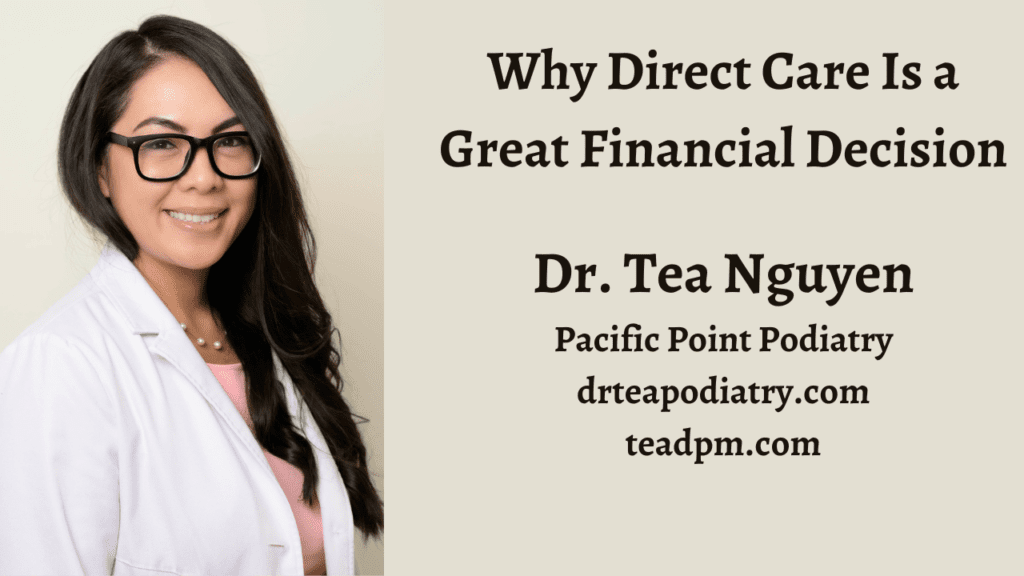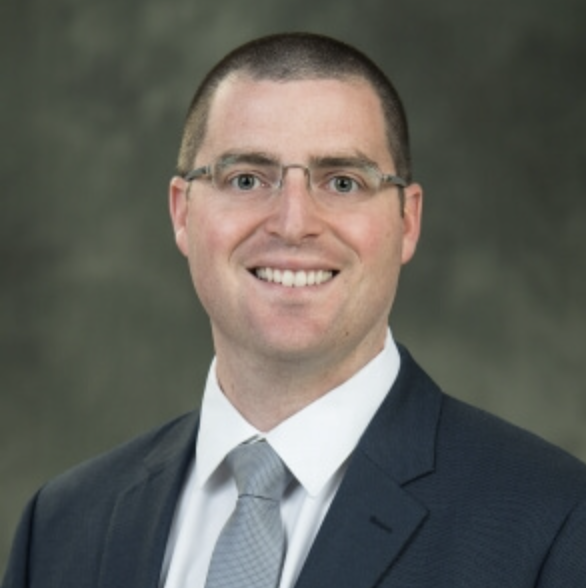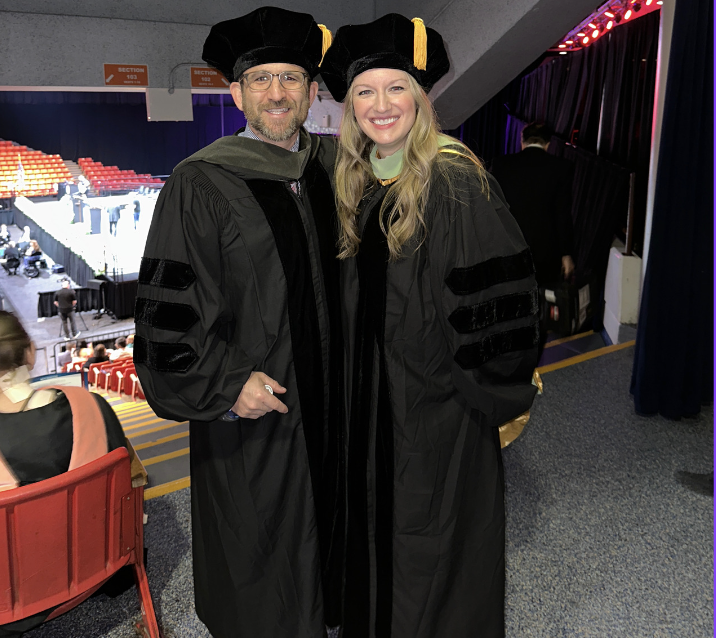Guest Blog Post Authored by Tea Nguyen, DPM – Pacific Point Podiatry; Published on February 26, 2024
“Private practice is dead.” Said no direct care practice owner ever.
When I was a podiatry student, it never crossed my mind that I would be the owner of a direct care podiatry practice. I thought I was on the path to being permanently employed because our educators said that was the trend. I thought happiness was having a stable job with a predictable paycheck and that was all there was to being a doctor.
My Early Days in Practice
After my fellowship training, I was running out of the gates eager to see as many patients as possible, using volume as a metric for success. The more patients you saw, the more people you were helping, and the more money you’d make. It made sense, right?
So I got a good enough job and felt pretty settled in. The honeymoon phase was blissful, I didn’t have to work all that hard to have patients on my schedule. There were certain things I preferred to do that I wasn’t doing and I had ideas of my own that would make my job what I wanted it to be but otherwise, I was cruising in my job.
The Creating of Pacific Point Podiatry
Fast forward to me getting pregnant shortly after, I realized I didn’t have control over my time. As an associate, I always had to answer to a boss and I didn’t love that. I hated asking permission for time off, it just reminded me that I never really owned my time. I eventually became frustrated and delusional enough to believe that I could run my practice better, so I created Pacific Point Podiatry in 2018, an insurance-based practice just like everyone else.
Following the footsteps of others, I contracted with every single insurance that would accept me. It took about 3 months to get traction with filling up the schedule so it seemed like it was all going to work out just as planned.
The Challenges of the Traditional Insurance-based Model
One year of being open, I needed help figuring out how to make ends meet. Money was hemorrhaging out of every possible figurative orifice and I could not make it stop. Every purchase felt necessary, all of the expenses were in line with what others were doing, and I was barely paying myself enough to cover my student and business loan. I opened multiple credit cards and each month that passed by it seemed more and more difficult to pay down the balance and I felt incredibly hopeless.
How did I get here? Am I really that irresponsible with money? What is the source of the hemorrhage? I was exhausted and couldn’t imagine trying to stack in more patients, still give quality care, and still be available for my growing daughter.
I sought out consultants who told me to see more and sell more. So I did that. Nothing budged. I got more tired and more hopeless. I shamefully went to my husband several times and asked him what backup money we had if all of this didn’t work out. I’ve never asked him or anyone for financial help. Did I even want to take that route, to take out more money with no guarantee this would even work? The debts on my business and school loans were multiplying and I was in a desperately dark place.
This was not what I envisioned owning a medical practice would be like. So I traced back to the source of the problem and saw how much I was spending to support insurance. Here’s the breakdown of the insurance-based practice model:
- 1 full-time receptionist $20/hr + health insurance benefits = $3900
- 1 full-time medical assistant $20/hr + health insurance benefits = $3900
- EMR + billing software = $149/mo
- Biller to collect and review denied claims, monitor A/R, part-time biller $20/hr + health insurance benefits = $1750 (or billing service 6-8% of collections)
- Rent: 3 exam rooms for fast turnover to see 20-30 patients a day = $3200/mo (California, 1100sqft)
- = $12,899/mo
Don’t forget intangibles like unbillable time on the unnecessary-but-necessary-to-get-paid paperwork. I also omitted to pay myself because I couldn’t!
Now just 2 years after opening the practice, I made a huge pivot to opt out of insurance, one stressful relationship at a time.
Here’s all I need to run my insurance-free direct care podiatry practice now, per month:
- Basic EMR, no added billing software needed $69
- 1 part-time staff $960
- 1 part-time virtual assistant $480
- Rent: Smaller property for fewer patients, lower lease $1000 (550sqft)
- = $1,609/mo
The Benefits of the Direct Care practice model were immediate
So now I can pay myself more, invest in more marketing, and have a lot more freedom without the financial stress that I used to have. Credit cards and bills are always paid off every month without worry. And I never have to think about billing codes, claim denials, deductibles, copays, prior authorizations, and whatever changes insurance demands of physicians. I happily show up to work, take care of patients, and get paid. A clean transaction that is promised to me every day I’m in the clinic.
There’s something else to consider with a direct care practice. The people who are choosing to see you as the doctor are choosing you with their dollars and are much more invested in their outcome. There is a trusting relationship that is mutual and this is the intangible thing with no price tag. I feel valued for my work which is a stark difference from being an associate and when I was contracted with insurance. I believe direct care was the very thing that helped restore my love for medicine and cured my burnout.
To say direct care is a great financial decision is an understatement, it does so much more. I have freedom in my time and I get to create a practice that works for me. Many doctors ask me if there are certain people for whom direct care will not work, and that includes:
- Someone who is unlikeable – you need to market yourself and generally speaking, likeable people do better than unlikeable people
- Someone who likes their current position – no drive to do anything different
- Someone who does not have financial security – owning a business requires risk-taking
- Someone unwilling to learn the skills it takes to own a business
Who Is the Direct Care Practice Model Right For?
Business skills are easier to learn than medical school and you can acquire it without an MBA. If you are driven to do something unconventional like have a direct care practice, you’ll see that it makes financial sense to leave insurance behind and create a practice where you can truly have the autonomy to take care of your patients and make a nice living without all the usual insurance stress.
Direct care is simple and financially sound. Consider it!
Dr. Tea Nguyen can be found at the following locations:
- https://www.speakpipe.com/teadpm
- drteapodiatry.com
- Instagram – @drteapodiatry
- LinkedIn – https://www.linkedin.com/in/teadpm/
- Direct Care Way Podcast







